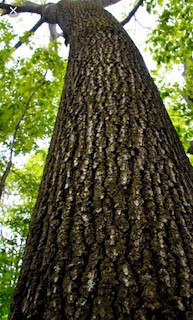-

Ash trees belong to the Fraxinus genus and the olive (Oleaceae) family of woody plants. Ash trees are known for providing shade, some people use them as street trees and lawns too. You can simply identify ash trees by looking at their compound leaves that are seen in clusters of leaflets and their unique barks that come in various species. One other unique thing about ash trees is that each tree has male and female reproductive organs on different trees and not both. If identifying an ash tree becomes too difficult for you to do, you can contact a tree service company around you to assist you. There are several species of ash trees in the world, some of them are; Manchurian ash (Fraxinus mandshurica), velvet ash (Fraxinus velutina), pumpkin ash (Fraxinus profunda), narrow leaf ash (Fraxinus Angustifolia), manna ash (Fraxinus ornus), Gregg’s ash (Fraxinus greggii), European ash (Fraxinus excelsior), Carolina ash (Fraxinus Carolina), California ash (Fraxinus dipetala), blue ash (Fraxinus quadrangulata), white ash (Fraxinus Americana), green ash (Fraxinus pennsylvanica), black ash (Fraxinus nigra), and many others.
There are fewer species of ash trees left in the world because emerald ash borer (a pest) led to the destruction of many of them. The pest itself does not destroy the leaves they eat but when their eggs hatch, their larvae penetrate the tree via crevices found on the bark of the tree and consume the internal tissues of the tree. This affects the ash tree’s ability to distribute nutrients and water, thus causing the death of the tree.
Many people mistake ash trees for other trees like dogwood trees, boxelder, maple, and black walnut. For you to easily identify an ash tree, you can do that by making comparisons of the seeds, branches, leaves, flowers, and fruits.
The branches
- Remove a branch from the tree you want to evaluate. Removing it will help you look at it more closely. Or you could just use a dead stick that fell on the floor for your evaluation.
- Check if the branches of the tree have opposite branching. The opposite branches of ash trees usually grow from the same spot as the major branch. Many other trees have alternate branching. You should know that maple trees, dogwood, and boxelder trees have opposite branching too.
- Look for the buds on new branches. You will see them opposite each other. But sometimes, buds die and fall off, thus making them lose a mate.
Leaves and seeds
To identify the leaves of an ash tree, get a branch that has leaves on it. All ash trees have compound leaf systems.
Find a thickened bottom of the stem, it is known as a “petiole”, and check if you can find between five to eleven tiny leaflets that grow from that branch at one spot. Those five to eleven tiny leaflets form a single leaf.
Add the compound leaves and the opposite branching to conclude if the tree is ash.
To identify the seeds of an ash tree, check if the seeds have brown or light green clusters. The seeds of an ash tree are paddle-shaped and are similar to tiny fragile leaves. They are usually seen in big groupings from the tree. You should not just conclude that all trees without seeds are ash trees. The seed clusters of ash trees are made in early winter and late fall. Don’t mistake boxelder seeds for ash tree seeds–while ash tree seeds look like paddles, boxelder seeds are similar to wings.
Ash leaves enhance the soil they fall on. When they fall, they remain green but they become rotten with aid from other types of creatures on the ground they fall on. And then the nutrients found in the leaves are immediately changed into humus.
Usually, the soil under an ash tree has a great structure, it absorbs moisture very well, has enough air in it, and accommodates other creatures that live in the soil.
The leaf of ash trees usually has long tips. Also, the leaves are reactive to sunlight and they can maneuver the leaflets to trap enough light from the sun. There are times when you will see the crown of an ash tree turning towards the left or right just to trap light from the sun. The leaves of an ash tree fall because the tree does not require the nitrogen contained in them.
The flowers
The flowers of an ash tree are usually birthed when the tree is within the age of thirty. The flowers first show up before the leaves and shoots show up around April and May. They have purple. The aroma of these flowers lures insects that fly at night.
The fruits
Every ash fruit is about three centimeters long but the seed in it is usually around one centimeter long. The fruits of ash get ripened in September but they get matured for dispersal around October when their colors change from green to brown. Also, the fruits of ash are formed in clusters similar to banana bunches.
The bark
A young ash tree usually has a smooth greyish bark. But as the tree ages, the bark starts to have a grey or brown color and it looks creased. An ash tree can grow as long as forty meters in height under normal conditions and it can survive for more than three hundred years.
Ash trees grow very fast in rich soil. They grow better around wet woodlands river banks but they grow adequate woodlands on only soils that are well-drained. Ash trees are commonly grown in Northern Ireland.
How can you tell if an ash tree has borers?
If you have an ash tree and you want to find out if it has borers, you will notice “blonding” on the bark of the tree. Usually, woodpeckers pull off the external gray bark and reveal the yellow internal bark.
Conclusion
There are many places in the world where the planting of new ash trees is not encouraged due to the abundance of the insect, emerald ash borer. So, if you intend to plant one, ensure you find out from a local tree service company around you.
Take ash tree health seriously, if you notice anything unusual about them, contact an emergency tree service company around you to check it out and recommend if tree pruning, tree trimming, or tree removal is the best solution for it.
Are Trees Damaging Your Property?
Sometimes one bad tree can damage your entire landscape and even your home. Consult with our trained staff for a free assessment
Available 24/7 for Emergency Service
Did lightning strike? That’s our specialty. One call and we will dispatch our emergency response team to handle all your emergency tree service needs
Hours
Monday: 7:30am - 6:30pm
Tuesday: 7:30am - 6:30pm
Wednesday: 7:30am - 6:30pm
Thursday: 7:30am - 6:30pm
Friday: 7:30am - 6:30pm
Saturday: 7:30am - 6:30pm
Sunday: Closed
We Are Serving Plymouth, MA | Milton, MA | Canton, MA
Copyright © 2022 - Lighting Strikes Tree LLC. All Rights Reserved.

